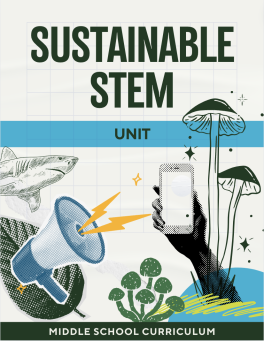Sustainable STEM Lesson 4: Making Mushroom Material

Summary
In this lesson, the students reflect on where their project is in the engineering design process and build their final product: a mycelium material cell phone case. They then create data tables that they will fill in throughout the growth process to help guide their product evaluation. This part of the unit takes approximately 10-15 days, depending on the growth of the mycelium which depends on classroom conditions.
This project came about from a collaboration between Beyond Benign and Steelcase.
This project came about from a collaboration between Beyond Benign and Steelcase.
Safety Precautions, Hazards, and Risk Assessment
Aprons, goggles, gloves and masks(Optional).It is important to thoroughly sanitize the surfaces that the mycelium material will touch in order to prevent contamination from other, more aggressive fungi and bacteria (like black mold).
Grow.bio material, when handled properly, is safe. However, the material is not for human consumption and, when dry, may irritate airways if directly inhaled.
Grow.bio material, when handled properly, is safe. However, the material is not for human consumption and, when dry, may irritate airways if directly inhaled.
Teacher Recommendations or Piloting Data (if available)
It is important to note that this lesson will refer to Grow.bio materials, not Ecovative materials.
Grow.bio, the educational spin-off of Ecovative Design, is where grow-it-yourself mycelium materials can be purchased.
Grow.bio, the educational spin-off of Ecovative Design, is where grow-it-yourself mycelium materials can be purchased.
Digital Object Identifier (DOI)
https://doi.org/10.59877/IDRD3988
Related Learning Objects
File (PDF, PPT, image, etc)
File (PDF, PPT, image, etc)
Link to external
Creative Commons License

This work is licensed under a Creative Commons Attribution-NonCommercial-ShareAlike 4.0 International License.

